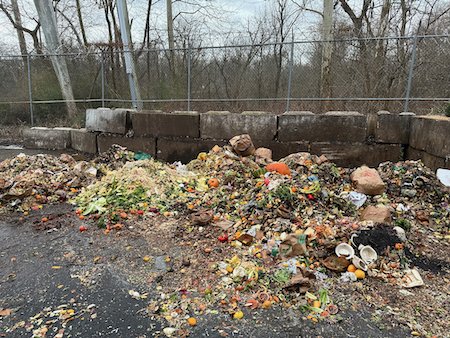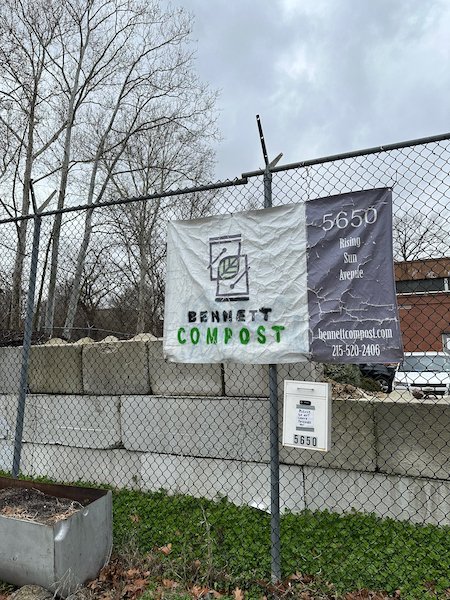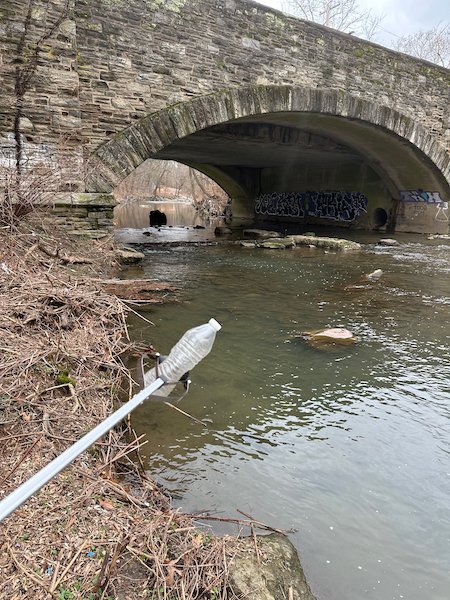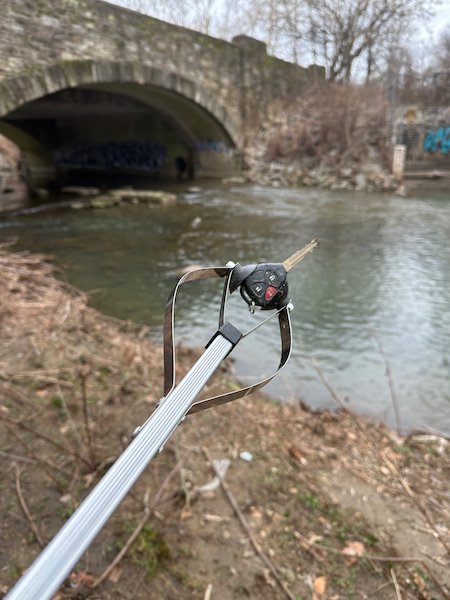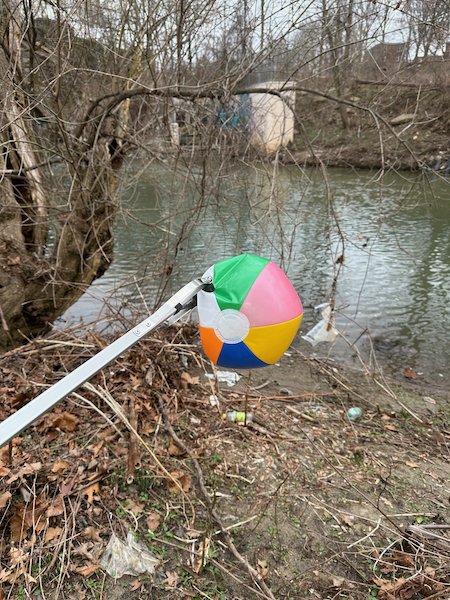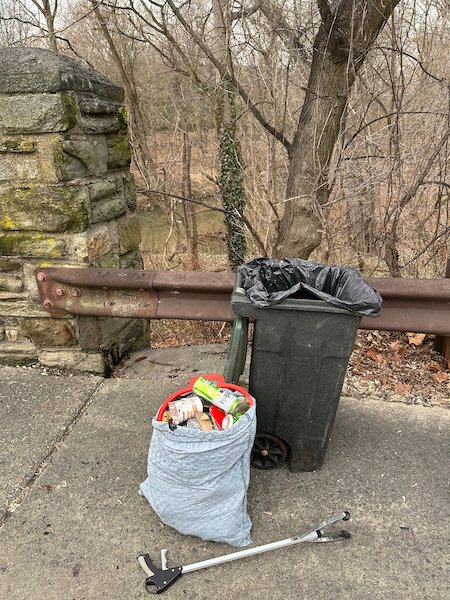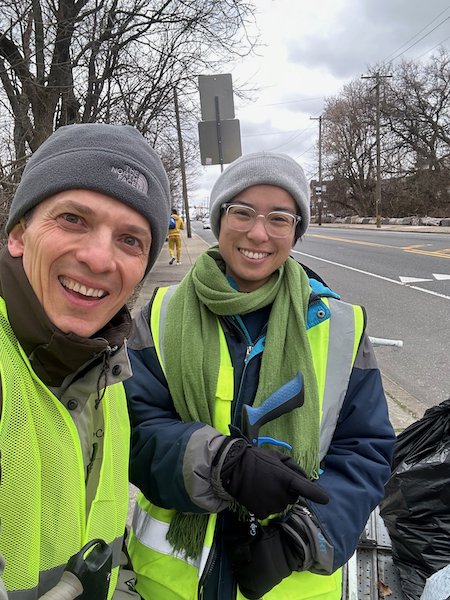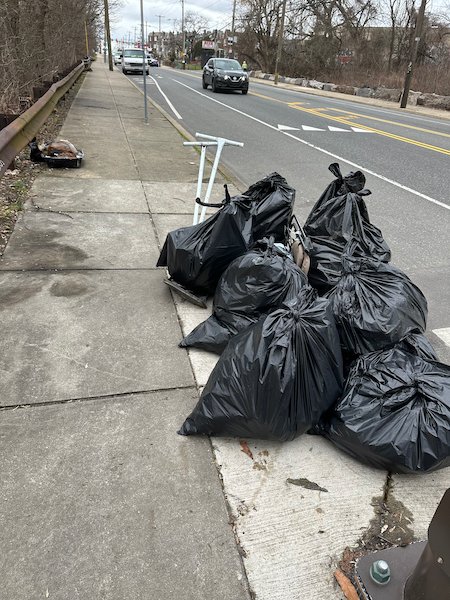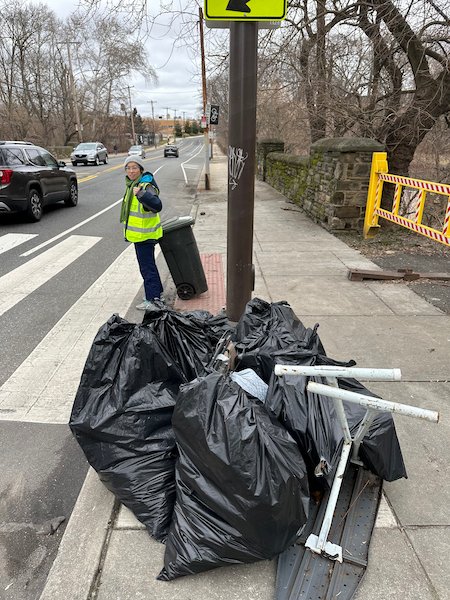Four Takeaways from Cleaning Up at Tacony Creek Park with Bennett Compost
How It Started
A FaceBook post by the Tookany/Tacony-Frankford (TTF) Watershed Partnership drew my attention earlier this week: Bennett Compost was looking for volunteers for a litter cleanup event in Tacony Creek Park, Philadelphia.
The compost company is located right next to the park, on Rising Sun Avenue.
This is an area in North Philadelphia, between Bucks County and Montgomery County that I drive through frequently, and that I have always wanted to explore more closely.
Thankful that my employer offers a few hours of paid volunteer time every year, I jumped at the opportunity to spend a couple of hours in the middle of the work week to help clean up this beautiful area.
Where is Tacony Creek?
Tacony Creek goes by multiple names: upstream, in Montgomery County it is called Tookany Creek, whereas further downstream, close to where it joins the Delaware River (right near the Betsy Ross Bridge to New Jersey), it is called Frankford Creek.
In a nutshell, this was one of the most littered areas I had seen, unfortunately so close to the water and right up to the creek.
Together with Shelby, a Bennett Compost employee who offered a brief tour of their compost facility before starting (see pics below), and then joined in the cleanup effort, we picked up several large bags of trash from Rising Sun Avenue, the trail area, and the West side bank of the creek.
In my estimation, we collected close to 150 lbs. of mostly food packaging, discarded bottles, plastic, and even an ironing board.
The starting point: Bennett Compost at 5650 Rising Sun Avenue, Philadelphia PA
The experience gave me a few insights into the environmental challenges this Philadelphia community faces and Takony Creek in particular:
1. The Overwhelming Scale of the Litter Problem
Participating in the cleanup opened my eyes to the magnitude of the litter problem in certain parts of the city.
From the park, to the streets, and right up to the water of Tacony Creek, the sheer volume of trash was significant. Plastic bottles, metal cans, toys, food wrappers, car keys, a lawn chair, a mattress, several tires, an ironing board, and other random discarded items right there in the park or by the side of the road, painted a distressing picture, not just of ongoing misplaced trash but neglect.
Sometimes this was too much to handle for my new 32” Vive Suction Cup Grabber Reacher which I was testing and using for the first time. Items were so spread-out through bushes and half-buried sometimes, that they were really hard to pick up by the flexible suction cups.
Trash attracts more trash, it does not just sit there. It silently communicates, its presence is an ongoing message that “this is where trash goes; it’s clearly OK and it’s been sitting here; it would thus be OK and would not make a difference if more were added”.
I saw multiple piles of discarded tires, especially from the Olney Avenue side, which speak not just to the problem but to me also of the opportunity: what would this beautiful area look like it if were restored to its natural beauty?
2. Pinpointing the Source: Roads
Looking at the situation through a topography lens, it is noticeable that the sensitive point for the creek and its water quality is where it meets communities and roadways. So a key revelation during our cleanup efforts was identifying the primary source, or facilitator of the litter: roadways.
This is consistent with the recent Pennsylvania Litter study, which identified motorists and pedestrians as leading sources of litter for both small and large items.
In the case of Tacony Creek Park, the nearest part of the park from the North and North-West sides are easily accessible by car, on Rising Sun Avenue and Olney Avenue. These areas bore the brunt of this careless disposal. The deeper one goes in the park on the trail, however, the less litter there is.
Shelby mentioned that some people even conduct ad hoc car washes right there on Rising Sun Avenue: pulling over, and emptying their car contents on the side of the road, which is right next to the park and wooded trail.
Just like people tossing litter from their vehicles has become a pervasive issue, emphasizing the need for public awareness campaigns and stricter enforcement to curb this detrimental habit should also become an ongoing, consistent effort. From this standpoint, I really hope the PA Fights Dirty campaign works!
3. Common Culprits: Packaging of Consumables
Examining the litter composition provided valuable insights into how our daily habits contributing to the pollution problem. Among the most common items were food packaging, alcohol and energy drink containers. In addition, the large household items are typical signs of illegal dumping activity.
So what may start as the effect of a consumption habit, and improperly disposing of packaging for food or beverages, soon becomes much more, as trash attracts more trash.
This insight points to the seriousness of the issue, and reminds me of another cleanup I did in Norristown last year: bulkier items follow the initial discarded containers trail, as people understand the area is not really cared for by anyone. It is an invitation to dump even bigger items!
While participating in cleanup events organized by Bennett Compost provided some immediate relief, I realized the need for ongoing, local community participation. Cleaning up as outsiders may offer temporary relief, but a sustainable solution lies in empowering residents and local businesses to take ownership of their surroundings. A continuous effort from the local community would thus go a long way toward managing the litter problem effectively.
4. Participation of Local Businesses Can Be a Lightning Rod
And this is where companies like Bennett Compost can have an outsized, positive impact on their local environment.
The compost company's proactive approach, organizing weekly cleanup events and encouraging employee participation, serves as an exemplary model for corporate social responsibility. It underscores the idea that businesses should not exist in isolation but actively contribute to the well-being of the communities they operate in.
It made me wonder what else is achievable if all or at least some businesses in the area took a similar approach. For a small commitment of time and effort, they can be true members of a joint solution to the litter problem and help beautify and restore an area. And of course, it would provide a marketing opportunity! who doesn’t want their name to be associated with a local environmental cleanup initiative?
Closing Thoughts
In conclusion, the cleanup at Tacony Creek Park organized by the Bennett Compost team offered a great way to make an immediate positive impact and hopefully set an example for others to follow.
By addressing part of the litter problem, reaching out to others for help, and inspiring corporate and business responsibility, initiatives like this one can restore urban ecosystems and preserve the delicate balance between urban life and nature.
A cleaner, healthier environment is possible and becomes much more reachable when people take collective action. Folks at Bennett Compost are shining a light toward the path forward.


